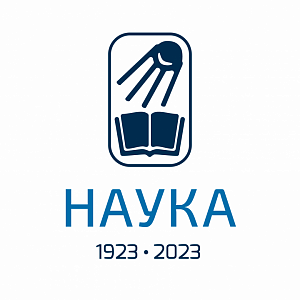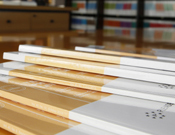Article
Plasma Investigations
2001. V. 39. № 1. P. 22–30
Vostrikov A.A., Dubov D.Yu., Agarkov A.A.
Inelastic interaction of an electron with a $\mathrm{C}_{60}$ cluster
Annotation
The method of intersecting beams of $\mathrm{C}_{60}$ fullerene clusters and of electrons is used to investigate the production of $\mathrm{C}_{60}^+$ and $\mathrm{C}_{60}^-$ ions and the radiation in the wavelength range from $300$ to $800$ nm for the electron energy $E_e$ ranging from zero to $100$ eV. The absolute values of the ionization and electron-attachment cross sections [$\sigma^+(E_e )$ and $\sigma^-(E_e)$, respectively] are determined. A maximum of $\sigma^+(E_e)$ of 0.53 nm$^2$ is observed at $E_e=52$ eV. For a $\mathrm{C}_{60}$ cluster excited by electron impact, "delayed" ($\sim150 \mu$s) ionization initiated by collision with the surface and ionization due to thermionic emission (its characteristic time at $E_e=60$ eV is $6\mu$s) is observed. It is found that, for $E_e < 0.4$ eV, the formation of $\mathrm{C}_{60}^-$ is defined by the polarization capture of an $s$-electron ($\sigma^-\sim E^{-1}_e$), and a formula is suggested for determining $\sigma^-(E_e)$. In the region of $E_e$ from $1$ to $6$ eV, the cross section $\sigma^-(E_e)$ shows only slight variations about $\sigma^-(E_e)=0.36\pm 0.03$ nm$^2$. For $E_e>7.5$ eV, $\mathrm{C}_{60}^-$ ions proved to be unstable to electron autodetachment. In the region of intersection of $\mathrm{C}_{60}$ and electron beams, radiation of a quasicontinuous spectrum described by a modified Planck formula for the thermal emission of spherical particles of diameter $d\ll\lambda$ is recorded. For $E_e>47$ eV, the brightness temperature proved to be $3150\pm50$ K. It is found that this radiation is emitted predominantly by hot $\mathrm{C}_{60}^{+*}$ ions produced as a result of thermionic emission from $\mathrm{C}_{60}^*$. The rate of radiation loss of energy by a $\mathrm{C}_{60}^{+*}$ ion and the cross section for the formation of radiating $\mathrm{C}_{60}^{+*}$ ions are found to be, respectively, $5.5\times 105$ eV/s at $T=3150$ K and $2\times10^{-2}$ nm$^2$ at $E_e=60$ eV.
Article reference:
Vostrikov A.A., Dubov D.Yu., Agarkov A.A. Inelastic interaction of an electron with a $\mathrm{C}_{60}$ cluster, High Temp., 2001. V. 39. № 1. P. 22
Vostrikov A.A., Dubov D.Yu., Agarkov A.A. Inelastic interaction of an electron with a $\mathrm{C}_{60}$ cluster, High Temp., 2001. V. 39. № 1. P. 22







